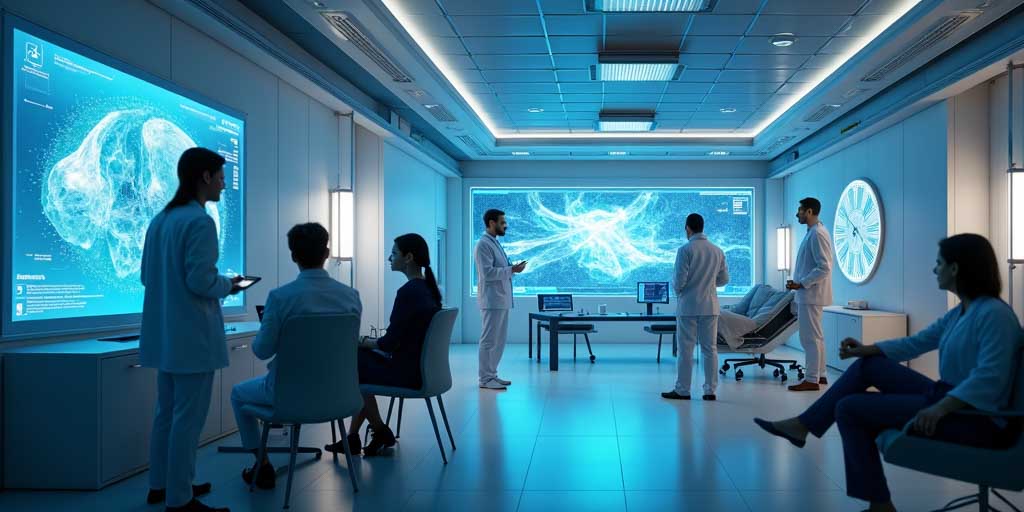Patient Care Reimagined: 2025’s Top Healthcare Innovations You Should Know
The healthcare sector is in the throes of a transformation, one that merges technology with patient care to produce outcomes that were once thought impossible. As we stand in 2025, the innovations in healthcare are not just exciting; they are revolutionary, promising to enhance patient care, reduce recovery times, and increase the overall efficiency of healthcare services. This post explores the top healthcare innovations of 2025 that are redefining patient care.
1. Artificial Intelligence in Diagnostics
Artificial Intelligence (AI) has taken a front seat in diagnostic medicine. AI algorithms are now capable of analyzing complex medical data and images with precision that matches, and sometimes surpasses, human experts. For instance, AI-driven diagnostic tools can detect anomalies in X-rays and MRI scans faster and more accurately, leading to early and more effective interventions.
Example: AI in Oncology
A notable example is the development of AI systems that can identify cancerous cells in pathology images with a higher accuracy rate than experienced pathologists. This not only speeds up the diagnosis process but also ensures that patients receive timely treatment, significantly improving outcomes.
2. Telemedicine and Virtual Health Services
The COVID-19 pandemic accelerated the adoption of telemedicine, and by 2025, it has become a standard component of healthcare. Virtual consultations, follow-ups, and even some forms of therapy are conducted remotely, providing patients with the care they need from the comfort of their homes.
Example: Remote Monitoring Tools
Patients with chronic conditions such as diabetes or heart disease are benefiting from wearable technology that monitors their health in real-time. These devices transmit data directly to healthcare providers, who can then respond to any warning signs immediately, potentially preventing hospital readmissions.
3. Personalized Medicine
Personalized medicine, tailored to individual genetic profiles, is no longer just a concept but a reality in 2025. This approach ensures that treatments are not only effective but also minimize side effects by aligning with the patient’s unique genetic makeup.
Example: Gene Therapy for Rare Diseases
Innovations in gene therapy have enabled doctors to treat previously incurable rare diseases by correcting genetic abnormalities at their source. This targeted approach has not only saved lives but also improved the quality of life for patients with rare genetic conditions.
4. Robotics in Surgery
Robotic surgery has become more refined and widely accessible by 2025. These robotic systems offer high precision and control, far surpassing human capabilities, which reduces the risk of complications and decreases recovery times.
Example: Minimally Invasive Robotic Surgery
Robotic systems are now used in various surgical procedures, from knee replacements to delicate neurosurgery. The precision of these robots means smaller incisions, less blood loss, and quicker recovery times for patients.
5. 3D Printing in Medicine
3D printing technology has evolved to play a critical role in patient care, from printing custom prosthetics and orthotics to creating complex biological tissues.
Example: Bioprinting Organs
One of the most groundbreaking applications of 3D printing is the bioprinting of organs. In 2025, this technology is used to create organs that perfectly match the patient’s tissue, eliminating the risk of rejection and the need for long-term immunosuppression.
6. Blockchain for Health Data Security
With the increase in digital health data, securing this information has become paramount. Blockchain technology offers a solution by creating decentralized and tamper-proof records of health transactions and data.
Example: Patient-Controlled Health Records
Blockchain enables a system where patients can control who accesses their health data. This not only enhances privacy but also ensures that medical histories are accurate and accessible, improving treatment outcomes.
7. Advanced Wearables and IoT
The Internet of Things (IoT) has extended its reach into healthcare through advanced wearable devices. These devices provide continuous health monitoring and real-time data analysis, aiding in preventive care.
Example: Smart Patches
Smart patches are an innovation in wearable technology that continuously monitors vital signs and administers medications through the skin. These patches are particularly useful for managing chronic conditions and ensuring compliance with treatment protocols.
Conclusion
The healthcare innovations of 2025 are not merely incremental improvements but are leaps forward that redefine what is possible in patient care. From AI in diagnostics to advanced robotics in surgery, these technologies ensure that healthcare is more precise, personalized, and accessible. As we continue to navigate this exciting era of medical innovation, the focus remains clear: to enhance patient outcomes and transform the landscape of healthcare forever.
